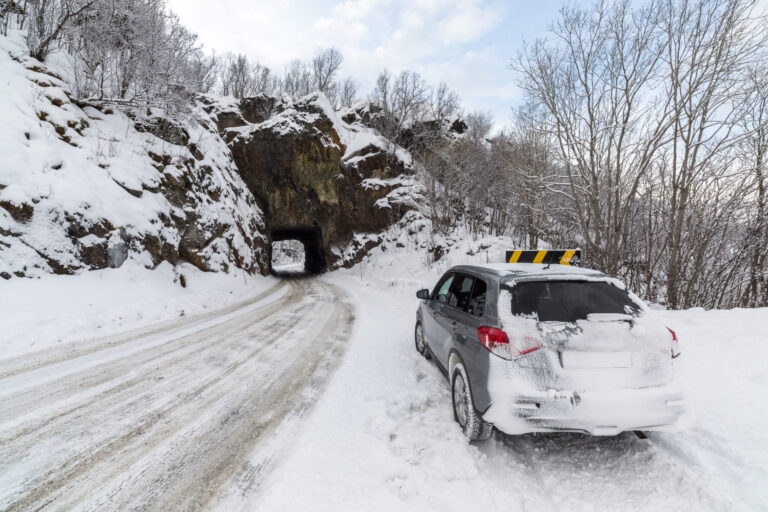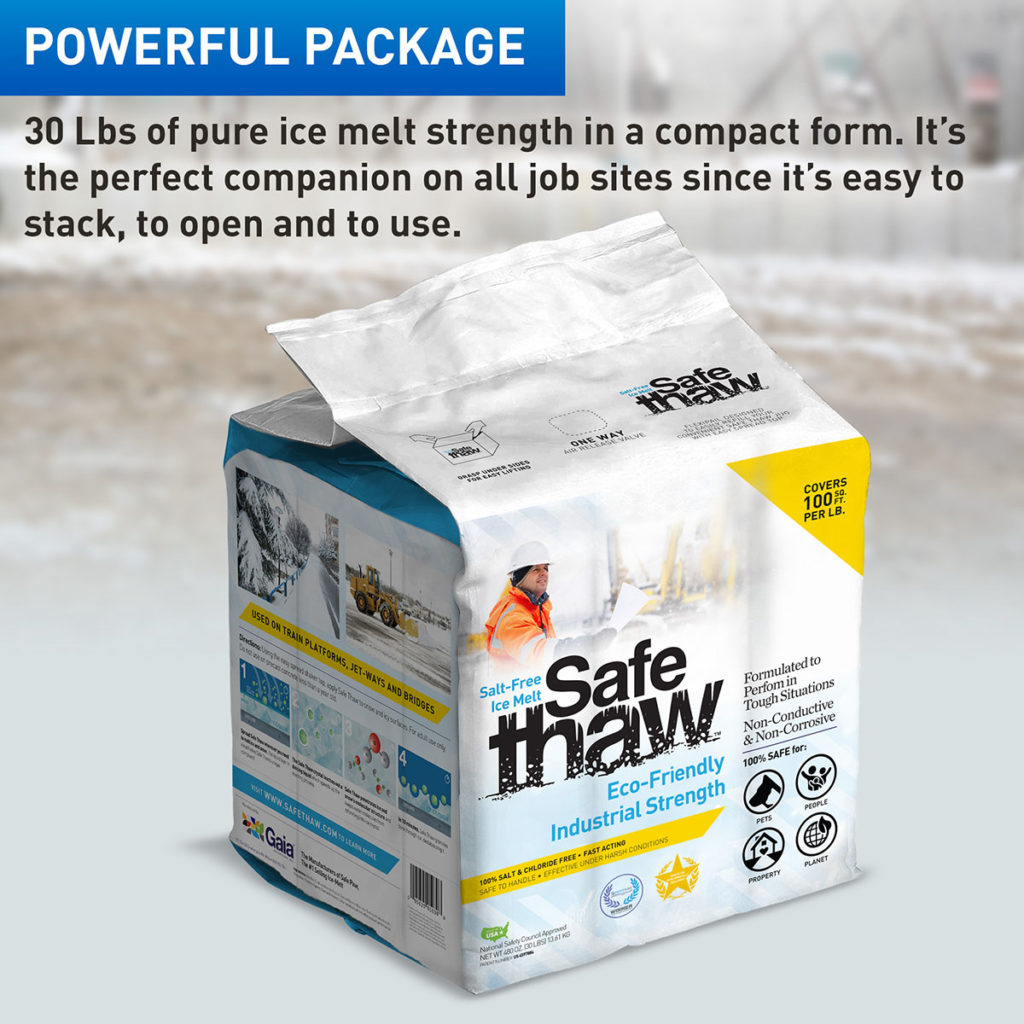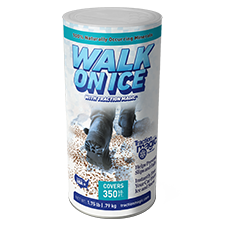Why Do My Tires Leave Black Marks On My Driveway?

Tires leave marks on driveways, whether they’re concrete or asphalt. This can be annoying, especially if you’re trying to sell your home. Luckily, there are some simple ways to clean up the black tire marks left by car tires on your driveway. In this article, we will discuss why tires leave marks and which safe melt ice melter you should use.

Safe Thaw
Safe Thaw was created as the ice management solution for tough winter environments. Ideal in commercial and industrial properties, shops, government agencies, bridges, and construction.
What Causes Tire Marks On Driveways?
- The tires are dirty. This is one of the simplest explanations, but it’s true. If you’ve been driving around town or through a large parking lot, you’ve likely accumulated some dust and dirt on your tires that can easily be wiped off with water. You can also use soap or vinegar to clean them if needed!
- The tires are not properly inflated. Tires that have low air pressure will naturally wear down faster than when they’re at their recommended PSI (pounds per square inch) because they’re being forced to work harder to grip onto the road and carry weight. All of this means more friction—which produces heat—and thus plenty of black marks on driveways everywhere!
- The tires have worn down too far in certain parts where there’s less tread left over time than others (like near edges). This causes uneven wear patterns which makes it difficult for them to grip flat surfaces like concrete or asphalt without leaving behind evidence.
What Is A Safe Melt Ice Melter For Concrete?
Any chloride-containing substance, like sodium chloride, potassium chloride, or calcium chloride, may be safe in other situations but not in concrete, especially new concrete. These acidic compounds break down the glue that holds concrete together. So when salt gets into the pores, freeze-thaw damage to the concrete happens more often. Because chlorides can quickly get through the thin layer of iron oxide that protects steel and start the corrosion process, they can cause reinforcing steel to rust.
Safe Thaw is a patented compound with two effects. First, the liquid starts melting the ice right away and breaks up its surface tension at the same time. It makes it easy for the crystal core to quickly break through the ice and make it less stable, which speeds up the melting process. It is happening while Safe Thaw’s traction agent keeps people from slipping. Safe Thaw draws heat, which makes it work even better.
Metal Roof Ice Melt Systems
Metal roofs are a great choice for any home or business because they offer many benefits over traditional shingles or tiles. They’re durable, they last longer, and they have an attractive look that’s perfect for any building. However, metal roofs also come with their own unique set of challenges, which is why installing an ice melt system is so important.
When snow and ice melt on a metal roof, it can cause all sorts of problems. The most common result of snowmelt is rusting. But even more dangerous than rusting is cracking and buckling—when snowmelt causes these problems on a metal roof, it can lead to structural damage.
How To Get Black Tire Marks Off Driveway Without Damaging The Surface
So, now let’s talk about what do you actually do when those unsightly streaks show up and refuse to budge with just water? Understanding how to get black tire marks off driveway surfaces means looking at both the type of stain and the material underneath. Concrete and asphalt absorb rubber differently, which is why some marks fade quickly while others seem almost permanent.
Start with a gentle approach. A stiff-bristled broom and mild detergent can often loosen fresh tire residue before it bonds with the pores of the driveway. For more stubborn spots, a pressure washer on a controlled setting is highly effective, though you’ll want to avoid overdoing it, especially on newer concrete that’s still curing. If you prefer a more natural method, applying baking soda paste and scrubbing it with a nylon brush can help lift rubber particles without harsh chemicals.
For commercial driveways where appearance matters, specialized degreasers are available that target hydrocarbons, which make up tire rubber. These products break the chemical bond between the rubber and the surface, making cleanup easier. The key is consistency—removing marks promptly so they don’t accumulate and create darker, harder-to-remove patches.
How To Get Skid Marks Off Concrete And Prevent Them Altogether
The bigger headache often comes when vehicles brake suddenly, leaving dark streaks that sink deep into porous surfaces. Learning how to get skid marks off concrete starts with identifying how long the marks have been there. Fresh skid marks are easier to tackle, while older ones may require stronger cleaning solutions.
A common method involves applying trisodium phosphate (TSP) mixed with water directly to the skid mark, scrubbing thoroughly, and rinsing with a hose. Another option is an oxygenated cleaner, which penetrates into the pores of the concrete. Just keep in mind that overly acidic cleaners may cause surface etching, leaving the spot lighter than the surrounding concrete.
Prevention is just as important as removal. Encouraging proper tire maintenance—such as correct inflation and timely rotations—reduces excessive friction that leads to black marks. Sealing your driveway also helps, as sealed concrete is less porous and doesn’t allow rubber to bind as strongly. For business properties with heavy traffic, this step is especially valuable to preserve a clean, professional look year-round.
How To Get Black Tire Marks Off Concrete The Right Way
Concrete presents unique challenges because of its porous nature. Once rubber embeds into those tiny holes, it doesn’t just sit on the surface—it bonds chemically. This is why many property owners struggle to figure out how to get black tire marks off concrete even after multiple cleaning attempts.
The trick is to combine mechanical action with the right cleaner. A rotating surface cleaner attachment on a pressure washer can provide the even scrubbing needed without gouging the surface. For cleaning solutions, enzymatic degreasers work exceptionally well because they target organic compounds in the rubber itself. Unlike bleach or vinegar, which can discolor the surface, these products lift the rubber without weakening the concrete.
Of course, ongoing maintenance plays a role. Sweeping and washing your driveway regularly minimizes dirt buildup, which can trap rubber particles and make marks worse. By dealing with minor stains before they turn into dark streaks, you’ll extend the lifespan and appearance of your driveway dramatically.
Prevent Tire Marks On Driveway: Long-Term Solutions
At some point, every property manager or homeowner asks the same thing: how can you prevent tire marks on driveway surfaces altogether? While no solution is 100% foolproof, there are several ways to reduce the problem.
One approach is sealing your driveway with a protective coating. Sealants act as a barrier, keeping rubber residue from penetrating too deeply. This doesn’t just help with tire marks but also protects against oil stains, moisture, and freeze-thaw cycles.
Finally, educating drivers makes a surprising difference. Hard acceleration, sharp turns, and sudden stops are the biggest contributors to driveway marks. Simple adjustments in driving habits—especially for delivery trucks or heavy vehicles—can drastically minimize black streaks.
Where Safe Thaw Fits In
It’s also worth noting that while tire marks are an issue year-round, winter adds another layer of complexity. Ice buildup means heavier braking and more skid marks on concrete or asphalt surfaces. Using chloride-based ice melts only worsens the situation, as they degrade the surface and make it easier for rubber to stick.
Safe Thaw, being 100% chloride-free, not only prevents surface damage but also minimizes the chances of black marks embedding deeper into weakened concrete. By keeping surfaces ice-free without corrosion, it reduces the stress on vehicles and, indirectly, the severity of skid marks. For commercial properties where appearance and safety go hand in hand, this makes Safe Thaw the smarter choice.
100% salt & chloride-free, fast acting Ice Management Solution
Conclusion
Black tire marks may seem like a minor cosmetic issue at first, but over time they add up—creating an unsightly, worn-down look that affects both curb appeal and property value. Understanding how to get black tire marks off driveway and even how to get skid marks off concrete is only half the battle. The real solution lies in combining proper cleaning techniques with long-term strategies to prevent tire marks on driveway surfaces altogether.
While DIY cleaning methods can help, nothing protects your driveway like prevention. Sealing, maintenance, and the use of chloride-free solutions like Safe Thaw all work together to preserve your concrete or asphalt in the face of both tire wear and winter hazards.
If you want to avoid spending time and money on endless cleanup or even resurfacing, start with smarter maintenance choices now. With the right approach, those stubborn black streaks won’t stand a chance.
Try Also Our Other Winter Safety Products:
Safe Paw
The Original and #1 Selling Pet and Child Safe Ice Melt for over 20 years. Guaranteed environmentally safe –It won’t harm animals or children, and it won’t damage your property. That’s Safe Paw. Safe Paw can change how winter affects our planet.

Walk On Ice
The handy disposable canister can be taken everywhere, with the same 100% naturally occurring minerals that provide instant traction on ice or snow. Use it on sidewalks, steps, or as an instant traction agent for your car.



